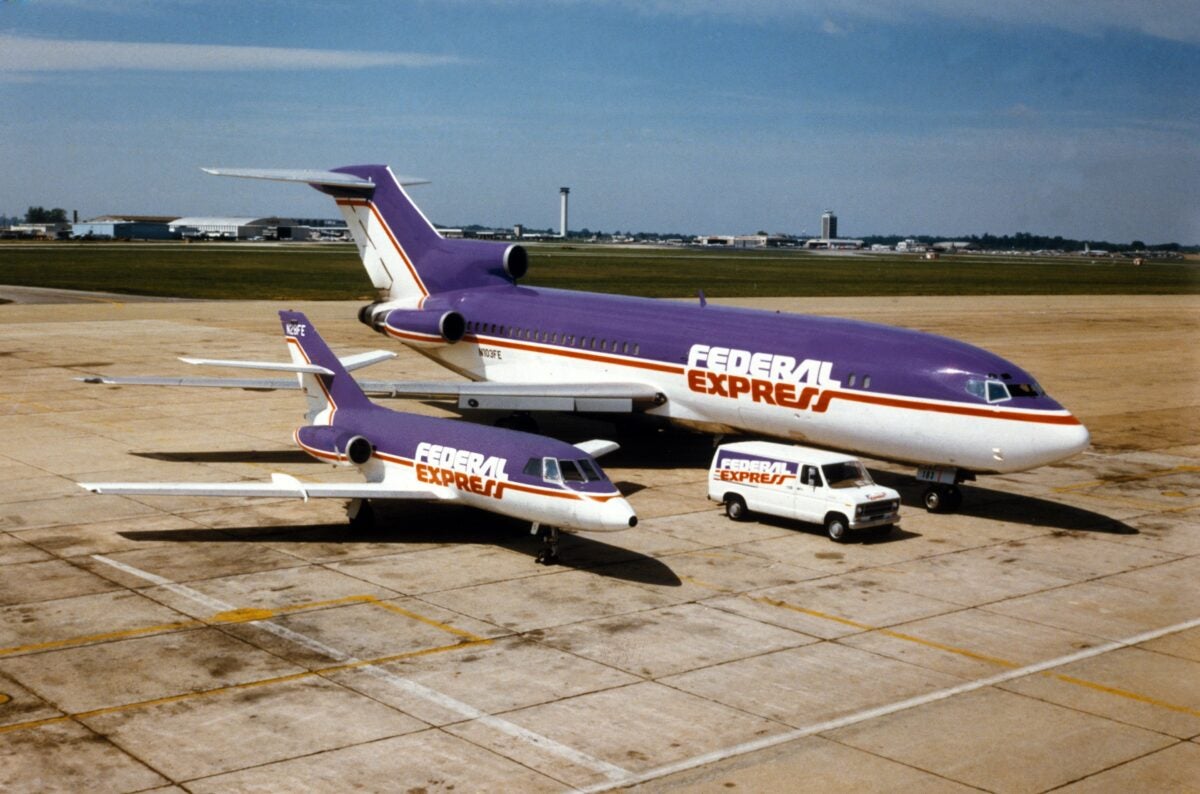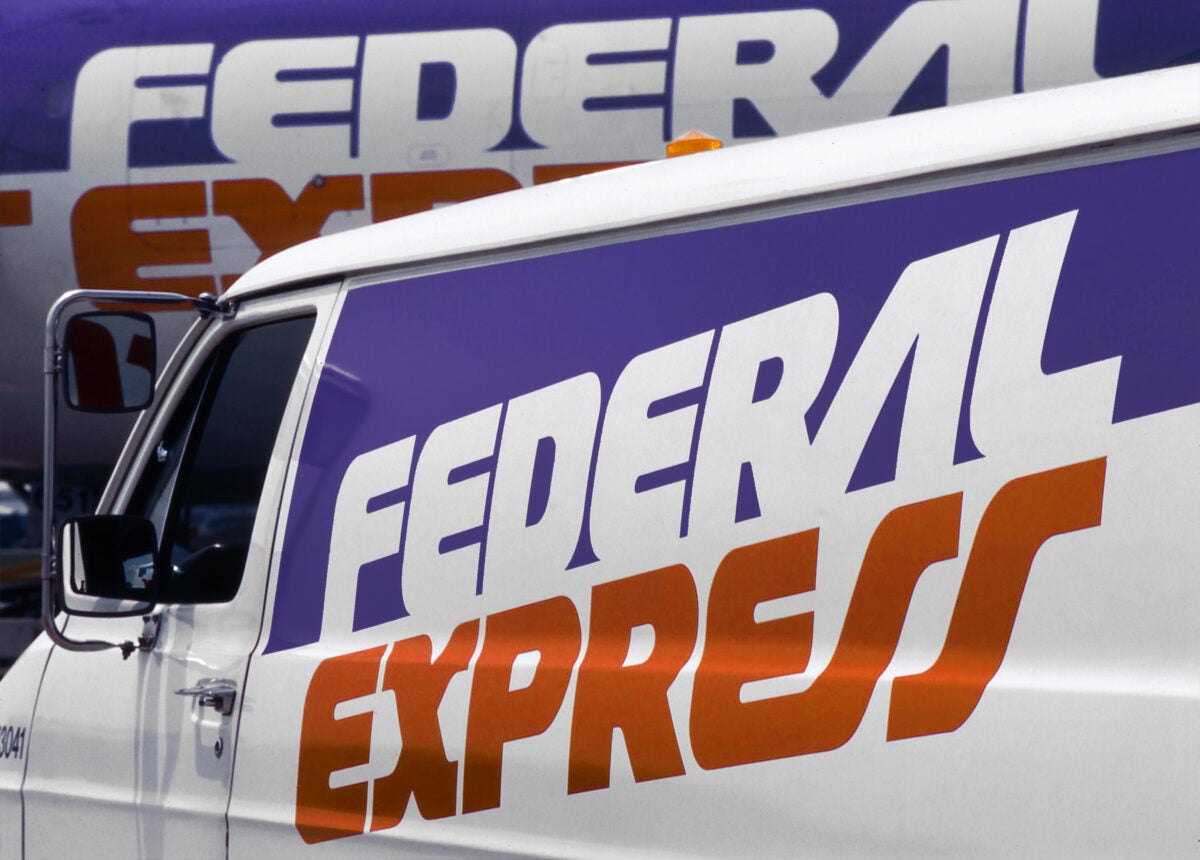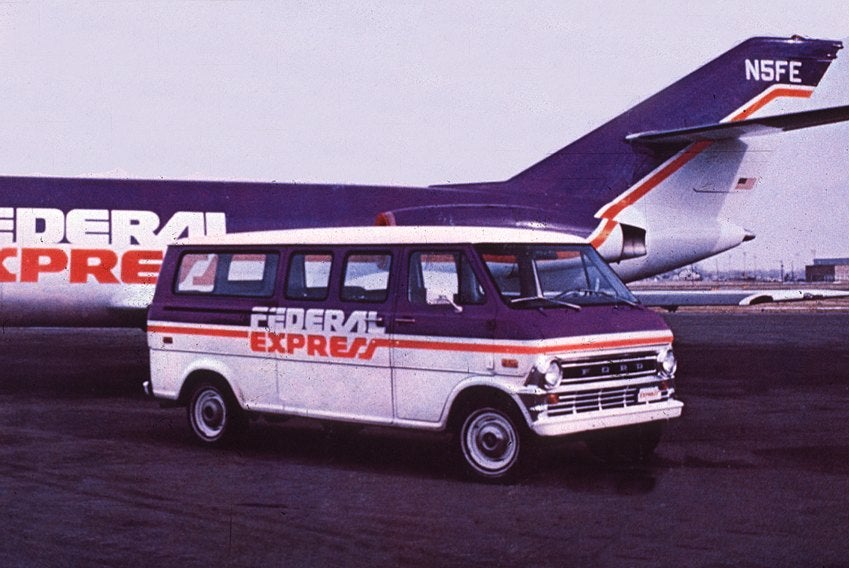Freight News:
At 50, FedEx faces new opportunities and challenges
As Monday broke over Wall Street, 60 top FedEx Corp. executives stood at the podium of the New York Stock Exchange to ring the opening bell for trading. Cities across the globe from Kuala Lumpur, Malaysia, to the company’s home in Memphis, Tennessee, were lighting landmarks, and airports were hued in its orange and purple colors. Last week, a portrait series collaboration with the famed photojournalist Annie Leibovitz was published to spotlight and elevate FedEx’s small business customers. Named “Driving Passions,” the series incorporates the company’s power and possibilities by showcasing three small businesses that represent the startups, innovators and “legends in the making.”
FedEx began flying 50 years ago Monday, but the concept that bore that era’s legend in the making came well before that. A Yale Business School student named Fred Smith came up with an idea to build a fast-cycle delivery network with an integrated air-ground operation. The Yale paper proposed that one company would have “custodial control” over a package or letter from end to end using its network of owned assets.

Smith’s professor didn’t think much of the idea, giving it a C grade for being an interesting but not workable concept. Undeterred, Smith borrowed $4 million from his wealthy father and raised millions more in venture capital. By 1971, Federal Express Corp. was born.
The company lost money early, spawning a rumor — always debunked — that Smith had to win a large gambling pot in Las Vegas in order to meet payroll. The catalyst came when Congress deregulated the air cargo industry in 1977. The law opened up rates and routes to market forces and allowed Federal Express Corp. to dramatically expand its fleet to meet the demand.
Today, FedEx is about to cross $100 billion in sales. It is the largest airline in freight ton-kilometers flown, though it is cutting back flights and grounding planes such as its MD-11 fleet — by fiscal year 2028 — as global economic conditions continue to stagnate. FedEx plans to remove 30% of its global trans-Pacific capacity on top of the reductions it made in response to a sharp slowdown in demand last September.
Through thick and thin, Smith stayed as CEO until 2022, an astonishing 51 years at the helm given its size and complexity. He remained very active in the role even as the years advanced.
FedEx is one of those few companies that changed culture as well as business. It also created a verb from its name. “FedEx it to me!” became a common phrase.
What goes around comes around. Last week, the company announced plans to consolidate its FedEx Express and FedEx Ground units, a watershed development for a company whose primary business units had always remained siloed. (FedEx Freight will remain separate from the new entity.) The new brand? Federal Express Corp.
The consolidation is part of a broader plan called Network 2.0, which is designed to save the company $2 billion through fiscal year 2027. (Fiscal 2024 begins June 1, 2023.) As part of the cost-cutting framework, FedEx has rolled out an ambitious program called Drive, which the company said will save it $4 billion through the end of fiscal 2025.
“The future of Drive will likely mirror the transformation that UPS (NYSE: UPS) went through in 2021, which means FedEx will be placing even more focus on customer profitability and cost containment,” said Branden Burt, director of parcel operations for consultancy TransImpact LLC.
A big challenge will be maintaining the brand through the transition, which will likely include more layoffs and walking away from some customers’ businesses, Burt said. However, if FedEx executes, it should expect to realize the same positive results that UPS has experienced in the past 12 to 18 months, Burt said.
With more than 710 aircraft, FedEx has the world’s largest fleet. The company will pivot from flying lower-priority international shipments twice within hubs to shipping the goods by truck to lower-cost hubs in Europe, flying them to a U.S. hub and then trucking to the final U.S. destination.
In the coming years, FedEx will likely be known as a trucking company. That may not sit well with Smith, whose air express baby and brainchild built the company. But that is progress.

FedEx has operated its ground business as a separate entity since the business, known then as Caliber Systems Inc., was acquired in 1998. For most of the time, it has worked well as shippers had a less expensive option for deliveries than the dominant UPS.
In recent years, however, the duplicative delivery schedules began to wear on customers and on the company. Unifying the businesses was an idea whose time had come. Only Smith argued to maintain the status quo.
By the time the company completes Drive and Network 2.0, it will look very much like UPS’ integrated pickup and delivery network, with fully integrated hubs, said Paul Yaussy, senior consultant, professional services at consultancy Shipware LLC.
Currently, FedEx shippers need to segregate Express and Ground shipments because they involve two separate deliveries usually at different times, Yaussy said.
“Shippers view those pickups and deliveries as work-day interruptions,” Yaussy said. Having those delivery intervals cut in half would be a significant productivity savings for all customers, he said.
Shippers should also look at reaping some of the benefits of the $4 billion Drive savings and approach FedEx sales reps with new pricing requests to adjust rates downward, Yaussy said.
The combination of the complex and overlapping networks has great potential but requires equally strong execution, something that hasn’t always been in FedEx’s DNA.
“Certainly, the company should merge their Ground and Express divisions. However, I’m not convinced FedEx has the right executive team to make the merger happen,” said Brittain Ladd, who runs his own logistics consultancy.
Ladd said he thinks the industry is about to see a repeat of the multibillion-dollar merger at the turn of the century between HP Inc. and Compaq Computer that took years and hundreds of millions of dollars to be completed.
One of the keys is the merger of its ground unit that uses independent contractors to move parcels and its Express division, which hires staff drivers. As more volume inherently moves to the lower-cost ground business, questions have arisen as to whether the staff drivers would be let go.
If FedEx keeps some of its Express drivers as staff, it will make a stronger case for FedEx, which is organized under the Railway Labor Act that covers airlines and railroads, to be brought under the National Labor Relations Act, which covers trucking, parcel firms like UPS and every other industry in the nation, according to Yaussy.
“UPS would have a much better case of forcing FedEx to no longer be organized under the RLA. This, in turn, would make it much easier to unionize FedEx drivers, something that has never happened, he said.
The company’s future may also include M&A. It may become the subject of a takeover attempt by one of the mega-retailers like Walmart Inc., as suggested by Ladd.
“Walmart should not sit back and watch Amazon become a leader in contract logistics,” Ladd said. “Acquiring FedEx is arguably the most strategic move Walmart can make outside of merging with The Home Depot.”

In recent years, FedEx’s financial performance has been up and down. In the years to come, there will be a much deeper commitment to reduced capital velocity, with capital expenditure as a percentage of revenue sitting in the mid to slightly higher 5% range.
One thing that is unlikely to ever change is the company’s steadfast opposition to organized labor. Other than its pilots, who were unionized when FedEx acquired Tiger International, a big international carrier, in 1987, FedEx has never operated with unions.
Udo Lange, president of health care, logistics and Americas International at FedEx Express, believes that the idea of evolving into a UPS redux is misguided. “We have stronger network capabilities. We are modernizing our fleet. And we are extremely oriented in data, more so than perhaps any company.”
“We are very different than UPS,” Lange said.
The post At 50, FedEx faces new opportunities and challenges appeared first on FreightWaves.
Source: freightwaves - At 50, FedEx faces new opportunities and challenges
Editor: Mark Solomon